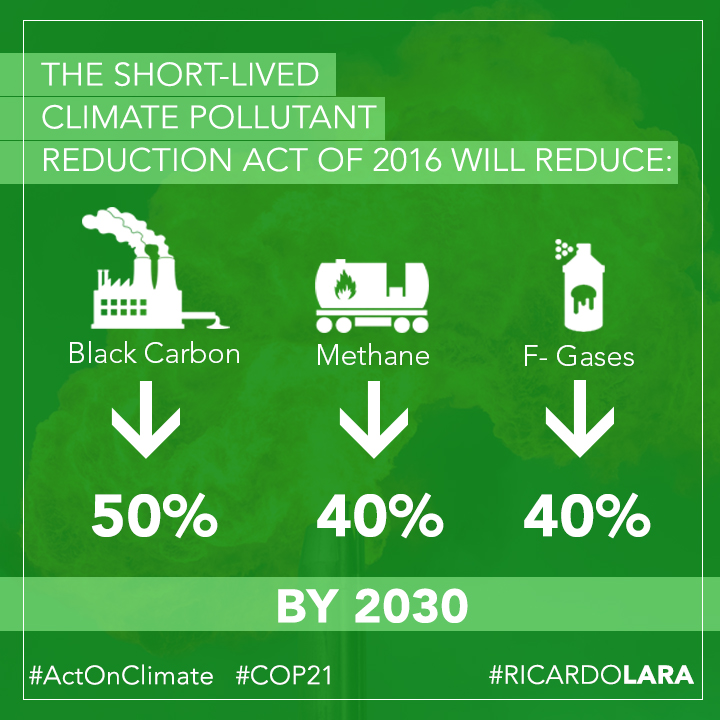The Next Phase in California Climate Leadership: Reducing Short-Lived Climate Pollutants

Senator Ricardo Lara
California has been a proud and bold leader in pursuing environmental policies to reduce climate change and address the sources that cause it. Those policies have mostly focused on reducing emissions of CO2, the most significant long-term driver of climate change.
However, more must be done to address Short-lived climate pollutants (SLCP) which disproportionately impact disadvantaged communities from the East Bay and Central Valley to the Inland Empire and Southeast Los Angeles County. My strategy to reduce SLCPs represents the next phase in California’s climate leadership: reducing black carbon emissions by 50%, methane by 40% and F-gases by 40% by the year 2030.
SLCPs are among the most harmful emissions to both public health and global climate change. Although they remain in the atmosphere for a shorter duration than CO2, their impact can be hundreds of times greater, contributing about 40% to global radiative forcing – the effect that causes climate change.
Legislation I authored in 2014, Senate Bill 605, directed California to produce a draft report on short lived climate pollutants, identifying major sources of emissions as well as policies and strategies to achieve significant, achievable reductions.
I grew up in South East Los Angeles, in the shadow of the 710 freeway, playing with friends in the rail yards of Commerce. It’s a region identified by US federal air quality standards as one of the worst in the nation. Like many other mothers in my community, my mom didn’t know much about the Kyoto Protocol or the United Nations Climate Change Conference.
But they know all about childhood asthma rates.
They understand the impacts on their children of chronic health problems caused by poor air quality – a result of the heavy industry and choking, congested transportation corridors in the region. Our communities feel the health impacts:
- One in 11 children in LA County suffer from asthma.
- Limited opportunities for physical activity, contributing to an epidemic of overweight and childhood diabetes that disproportionally impacts black and Latino communities.
- Cancer clusters, asthma, low birth weight – these are not abstract issues, these are problems that Californians across the state face every day, and are consequences of poor air quality.
For example, if you live in the City of Commerce you are 140% more likely to contract cancer from diesel soot than people in the rest of LA.
The issue of clean air, clean fuels, and achieving the state’s ambitious carbon reduction goals is one of the greatest priorities facing the state legislature. Families in the communities I represent – particularly in Southeast LA County - can’t wait any longer.
Reductions in short-lived climate pollutants will help us meet our climate change goals and at the same time dramatically reduce pollution and air contaminants that are poisoning our communities. My proposal will continue placing California at the vanguard of climate change policy and ensure that our most disadvantaged and vulnerable communities - which are disproportionately affected - benefit from a proactive, lasting reduction strategy in short lived climate pollutants. It’s the next logical step for California and it’s action that cannot wait any longer.
